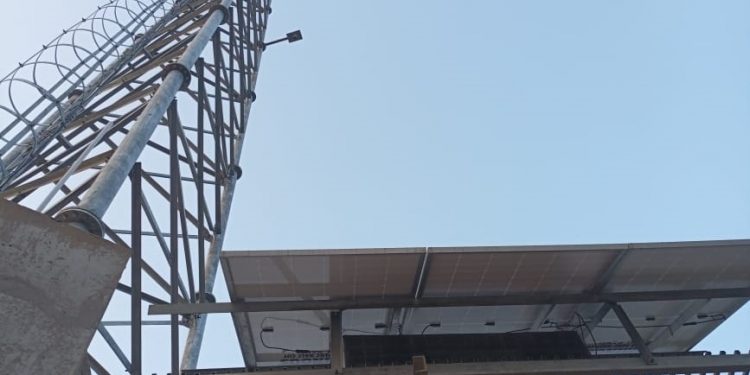RAJESH MOHANTY, OP
Rourkela: Five elephants that ventured dangerously close to railway tracks were Sunday saved thanks to an innovative pilot project led by the Forest department, harnessing artificial intelligence (AI) technology to safeguard jumbos. The initiative involves the installation of four solar-powered towers, each equipped with 360-degree cameras that provide real-time information to a control room. When elephants approach the railway tracks, the system automatically alerts the control room, which can then notify the railway staff at Bondamunda as well as Forest teams. “We’ve installed these AI-enabled towers with cameras that can detect elephants within a 500-metre radius of the tracks,” said Jasobanta Sethi, the Divisional Forest Officer (DFO) of Rourkela. “This is the first time such technology is being used in Odisha,” he added.
The towers, which were set up at a total cost of Rs 2.9 crore, are positioned at four strategic locations in Chandiposh, Mahipani, Dolakudar, and Sonakhan. The cameras, imported and installed by a vendor from Delhi, are designed to detect elephants and send alerts to the control room. The system has already proven effective — on its first day of operation, the tower at Dolakudar near Lathikata prevented a potential mishap, saving two adult elephants and three calves Sunday. “This technology not only helps save elephants from fatal injuries caused by train hits, but it will also assist in preventing forest fires and illegal poaching activities,” Sethi added.
Also Read: Railways sanctions over Rs 500 crore for two flyovers in Odisha
Environmentalist Satya Behera expressed optimism about the project’s success, noting, “From day one, the tower at Dolakudar saved these elephants, demonstrating the system’s potential.” The project is being hailed as a significant step forward in protecting wildlife and improving safety for both elephants and humans. The DFO also mentioned that efforts are underway to treat an injured elephant at Rajgangpur, with the team ready to intervene if necessary. This pilot project marks a promising new approach to conservation and safety in sensitive wildlife zones.







































